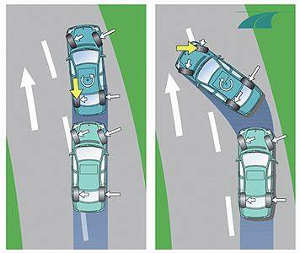What Does ‘Electronic Stability Programme’ (ESP) Do In A Vehicle?

In the dynamic landscape of modern vehicles, safety technologies play a pivotal role, with the Electronic Stability Programme (ESP) emerging as a crucial component.
In this article, we’ll explore the significance of ESP in ensuring safety for all road users, especially in challenging driving conditions.
Plus, we’ll delve into what ESP does, how it works, why it matters when you get behind the wheel, and its relevance to motor manufacturers.
What is ESP, and Why Choose a Vehicle with This Feature?
ESP, or Electronic Stability Programme, is a key safety feature designed to help drivers maintain control of their vehicles during challenging driving conditions and scenarios.
In the motor trade industry, where safety is paramount, choosing a vehicle equipped with ESP on a car dealer forecourt is essential.
This feature proves vital in preventing collisions or accidents by assisting drivers in avoiding the loss of control if it unfortunately happens.
Starts With a Warning Light
Motor trade professionals are well-acquainted with the ESP warning light on the dashboard.
This light flickers during normal operation but can indicate issues with tires, electrical malfunctions, traction loss, faulty sensors, brake system problems, and much more.
Understanding the warning signs is crucial, emphasising the importance and need for regular vehicle maintenance by a qualified garage mechanic, not just an MOT.
How ESP Works
ESP utilises a sophisticated system of sensors, including wheel speed sensors, steering angle sensors, and yaw rate sensors.
These components work together to monitor the vehicle’s speed, direction, and the driver’s steering input.
The program compares the driver’s intended direction with the vehicle’s actual direction based on sensor data.
If a discrepancy is detected, ESP intervenes by applying brakes and adjusting engine power to stabilise the wheels, effectively preventing oversteer and understeer.

Vehicle Safety
ESP significantly enhances road safety, benefiting drivers, pedestrians, and other road users.
It becomes crucial in challenging driving conditions such as wet or icy roads, sharp turns, or emergency manoeuvres. Additionally, ESP helps reduce the risk of rollovers, especially in larger vehicles.
The confidence instilled by knowing a vehicle is equipped with ESP is invaluable, especially in emergencies.
The Highway Code provides official braking distances, the distance a vehicle travels while you’ve got your foot on the brake if making an emergency stop.
The braking distances are currently:
20mph – 6 metres
30mph – 14 metres
40mph – 24 metres
50mph – 38 metres
60mph – 55 metres
70mph – 75 metres
Traction Control
While ESP and traction control aim to enhance vehicle stability and control, they serve distinct functions.
Tyre dealers will be aware traction control focuses on preventing wheel spin and maintaining traction between tyres and the road surface, addressing a different aspect of vehicle safety.
Is it the Same as ESC?
Terms like Electronic Stability Control (ESC) are synonymous with ESP in the motor trade industry. Different motoring manufacturers use varying labels, such as Dynamic Stability Control (DSC) or Porsche Stability Management (PSM).
While the names may differ, the underlying stability control system remains consistent, emphasising the standardisation of safety features for motorists.
Summary
In conclusion, the Electronic Stability Programme (ESP) stands as a cornerstone in pursuing road safety. Understanding its functions, significance, and relevance reinforces the importance of this safety feature in the modern vehicle.







